SA boarding schools — Are they worth the money and how do they compare? Explore our SA boarding schools interactive guide
Don’t go old school – today’s students are more likely to find five-star meals, personal tutors and freedom to explore the city. At $20,000+ a year, being a boarder’s a big investment. Is it worth it? See how the schools stack up in our INTERACTIVE GUIDE.
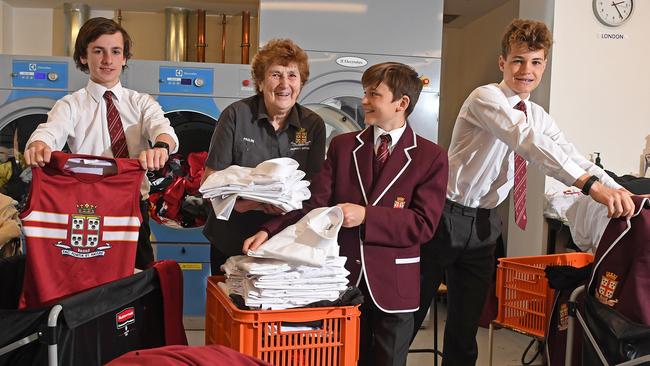
Education
Don't miss out on the headlines from Education. Followed categories will be added to My News.
- More SA education news from The Advertiser
- Latest Advertiser +Rewards: Enter our subscriber-only competitions
South Australia’s schools are investing heavily in boarding houses despite slow growth or declining numbers of teenagers in regional areas.
About 1500 students board at schools across the city, with parents forking out tens of thousands of dollars every year for the best education and learning experiences for their children.
So in the competitive education market, what are schools doing to set themselves apart in the boarding house space? The Advertiser has created an interactive guide to help you compare.
Rostrevor College will be the next to invest, allocating more than $2m to an upgrade.
“There will be spacious living areas in several separate wings of the boarding house, many more bathrooms, and every student will have his own secure bedroom and study area,” Rostrevor principal Brian Schumacher said of the project, which will be completed by the end of next year.
One of the most substantial projects has been at Prince Alfred College which last year opened a $22m, five-storey boarding house with 150 beds, ensuite bathrooms, mess hall and recreation area, commercial laundry, meeting and music rooms, external garden areas, plus four apartments for house supervisors.
“The traditional boarding house set up with four to six students sharing a room is a thing of the past at PAC,” said boarding director Zac Savage.
Seniors are in single rooms while junior are in a twin-share “which supports them to learn about tolerance, compromise and respecting others’ boundaries”.
Mr Savage said PAC aimed to provide “a great place for boys to live and learn, including a pastoral care focus that supports their physical and emotional wellbeing”.
CLICK THE SCHOOL LOGOS BELOW TO LEARN MORE ABOUT THEM
Westminster School is more than doubling its dining hall to about 250 places so day students and parents can have an evening meal on campus, helping to better integrate boarders in the broader school community.
Westminster principal Simon Shepherd said boarding remained a necessity to give regional students the opportunities of a bigger school with greater subject choice and facilities.
Population was a challenge but the schools were adapting.
“There’s been a decrease in SA in the number of regional families – what is one farm now might have been four or five farms in the ’80s,” Mr Shepherd said.
“And there’s a knock-on effect in the regional towns.
“But the beds are being filled by international students – at least they were pre-covid – and there’s been an increase in Indigenous students which is great and breaks down barriers.”
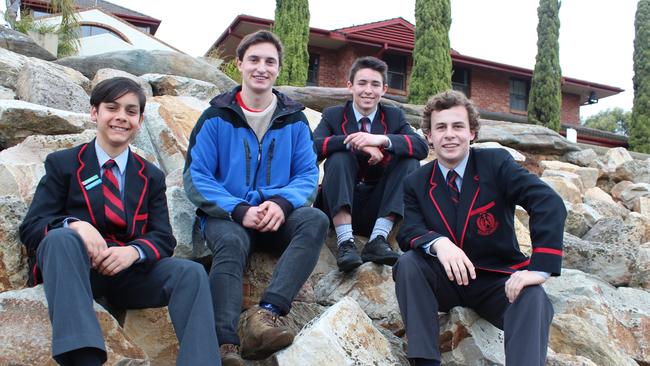
At Immanuel, which at 170 students is the largest in SA, the net is cast wide.
“Most of our boarders from SA but we have a significant cohort from the NT and a few from WA, Victoria and NSW,” said boarding director Bernie Dean.
“They come for many reasons – traditionally it was because of religious affiliation or family connections.
“That hasn’t gone away but now there’s more shopping around and they visit to see what the place feels like.
“The kids have a big say in making the decision nowadays, they want to know whether this is the place they can do their schooling, is this somewhere they can live.”
With costs typically $20,000 to $25,000 a year, it’s a substantial investment for families.
Almost all schools stress that they offer high levels of pastoral care, mentoring systems, opportunities in sport and arts and pathways to develop leadership and to become responsible young adults.
“We provide individualised wellbeing and academic support for every boarder to ensure a sense of belonging – our main priority is that the girls feel like they’re at home,” Seymour marketing manager Holly Ayres said.
At Pembroke, students are grouped into tutorial groups of about a dozen.
“Each tutorial is looked after by a dedicated tutor and senior student boarders have opportunities for leadership roles within the boarding house and tutorial system,” Pembroke spokeswoman Hannah Bone said.
Several schools offer ancillary services from health and wellbeing professionals.
“The role of highly qualified and professional staff is a key point of difference for boarding at St Peter’s College,” boarding director Ray Pearson said.
“Our boarders are offered more than just a home away from home; they are nurtured and guided as they embark on their journey of academic, social and character development.”
Many schools have dedicated, long-serving staff, perhaps few more so than housekeeper Pauline Coupe who has spent 33 years changing the sheets and doing the laundry at Prince Alfred College.
“I’ve washed an awful lot,” she said when asked how many loads she’d done over the years.
“Some of the boys here now are ones whose fathers were here when I started.”
As well as thousands of rolled socks and ironed shirts, she’s provided a sympathetic ear to the boys.
“I suppose we’re like mothers to them while they’re here,” she said.
Many schools reach out into the community as well as looking after students.
At Wilderness, the boarders financially support girls at a boarding school in Nepal.
“Our boarders are provided with the opportunity to elect to travel to Nepal to meet and spend time with these girls during their senior years,” marketing director April Ridgway said.
The days of a dining environment like an orphanage in the Oliver Twist tradition are also long gone with qualified chefs, professional caterers and variety now the order of the day.
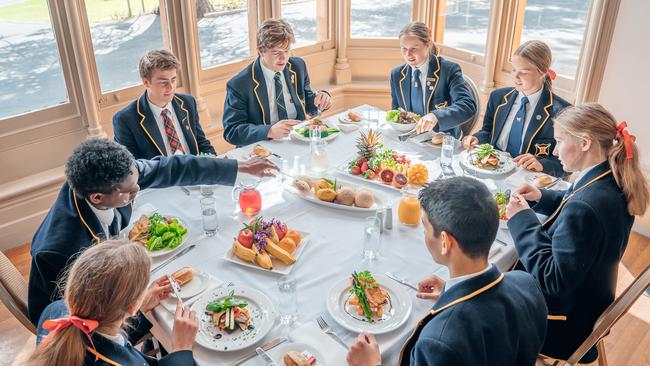
“Our food is prepared by our internationally trained chef and is nutritious, varied and delicious while catering for all dietary requirements,” a Scotch College spokeswoman said.
“On weekends our boarders will be surprised with a pop up ‘restaurant at the house’ and once a month our students come together to prepare a collaborative Saturday evening meal.”
Walford principal Rebecca Clarke regularly shares the evening meal with the boarders.
“Our boarders appreciate the opportunity to make lifelong friends as they share in the common experience of living away from home,” she said.
At several schools, boarders can make themselves something to eat.
Westminster girl’s captain of boarding Chloe Dubois, from Wudinna, said they live in small units which made it feel like home.
“We usually just eat in the dining hall but we have an oven, a microwave and fridge so we can make a snack or bake a cake for ourselves if we want to,” she said.
Boy’s captain Gus Llewellyn, from Keith, said the dining hall food was pretty good.
“Everyone’s got their favourites but they have a wide range of options so mostly you’ll find something you enjoy,” he said.
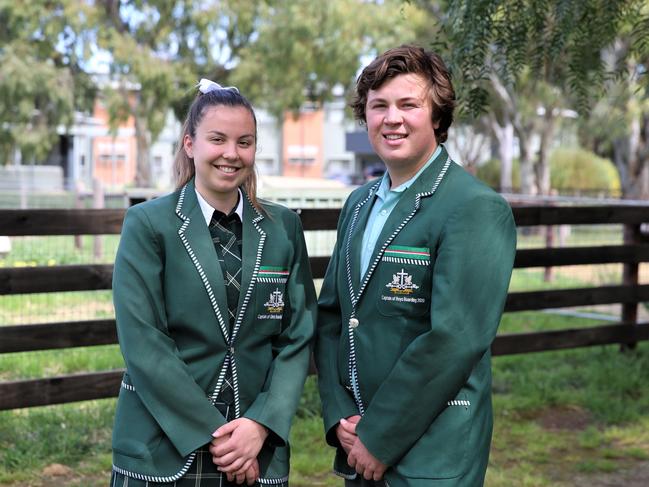
Most boarding houses in SA are in independent or Catholic schools, but there are four government-run houses.
Wiltja in Adelaide’s northern suburbs caters for Indigenous students from the APY lands.
Burra, Cleve and Lucindale have small boarding houses for local farming families.
Nicola Noakes is the housemother at Burra’s Goyder House, where she cooks and cleans and looks after the students.
“It’s a challenge but I really love it, they’re a very energising bunch,” she said
“I guess I understand the bush kids anyway.
“It’s really a family place, everyone gets on pretty well.”
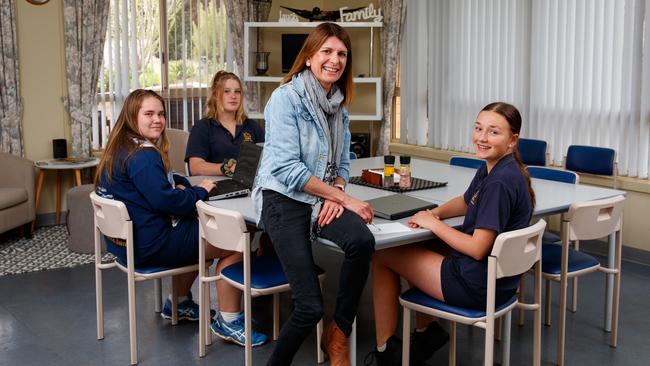
Ms Noakes was a boarder at Wilderness when she was a student.
“Boarding back in the ’80s was a lot different,” she said.
“Sometimes when these kids complain about rules, I think you haven’t seen anything.”
Some schools still have strict rules but many apply flexibility with seniors given more leeway and greater freedom coming with greater adherence to policies.
Few schools restrict the students from leaving the campus provided they follow sign-out and protocols about being contactable, but there are differences in allowing them to have cars.
“Black and white rules are the easy way but not the right way,” said Immanuel’s Mr Dean.
“We want to decrease the size of our handbook so we’re ideologically driven not rules driven.”
Whether to make students hand in phones at night is one of the areas with considerable variation between schools.
Many are strict at junior level but let year 12s police themselves.
Mr Dean said Immanuel did try a hand-in system “but we ended up with boxes of fake phones”.
Westminster’s Mr Shepherd said if the students abused an honor system they would confiscate the phones.
“It depends on the level of trust and the growth you want the kids to have,” he said.
“You want the kids to grow up to self-govern.”
